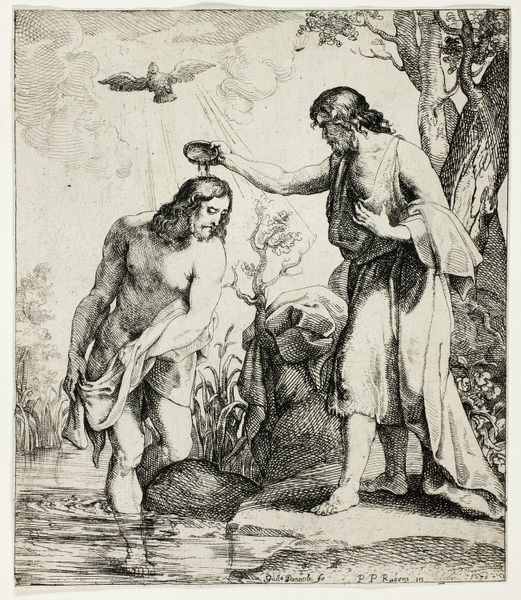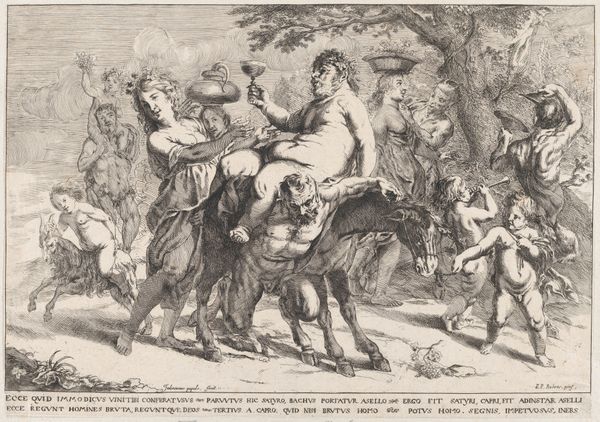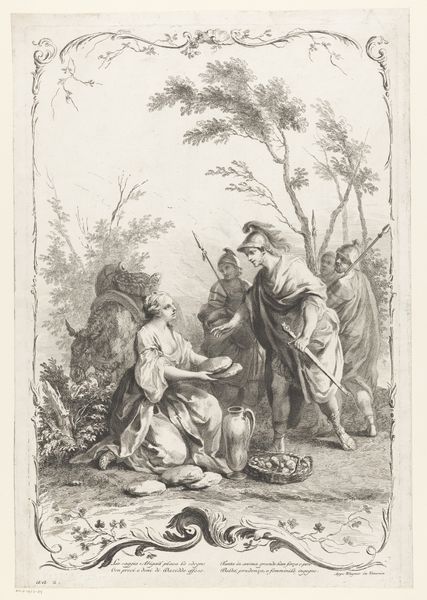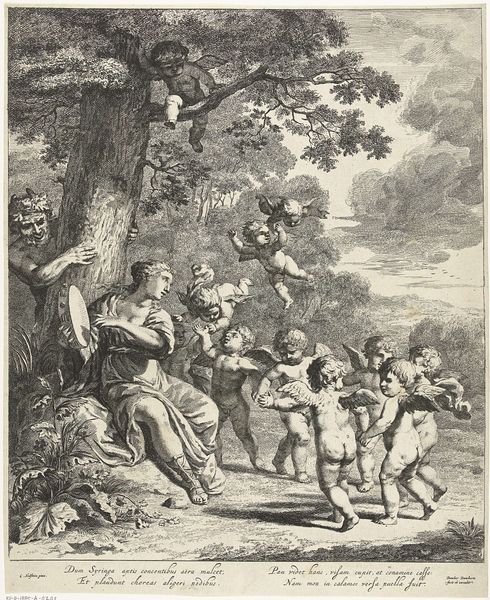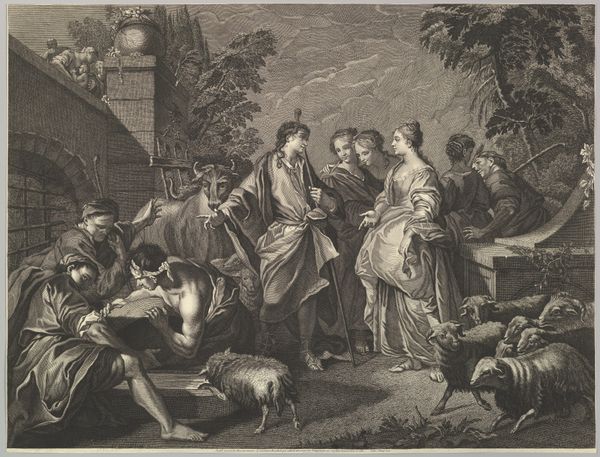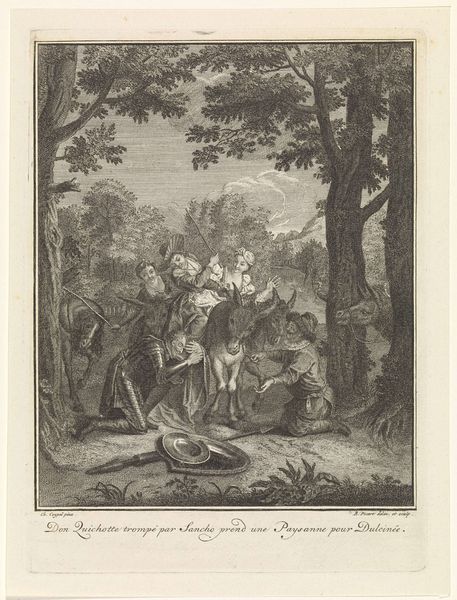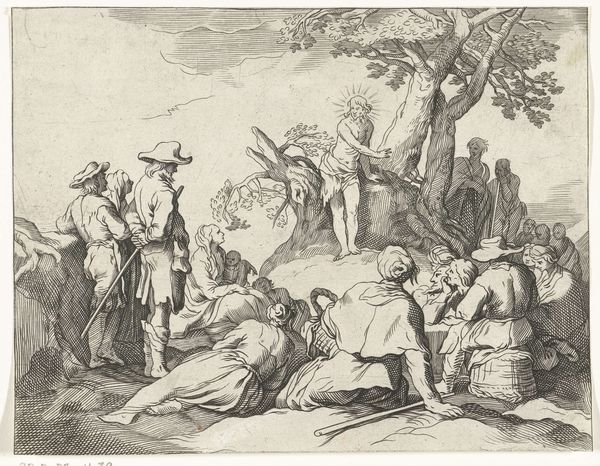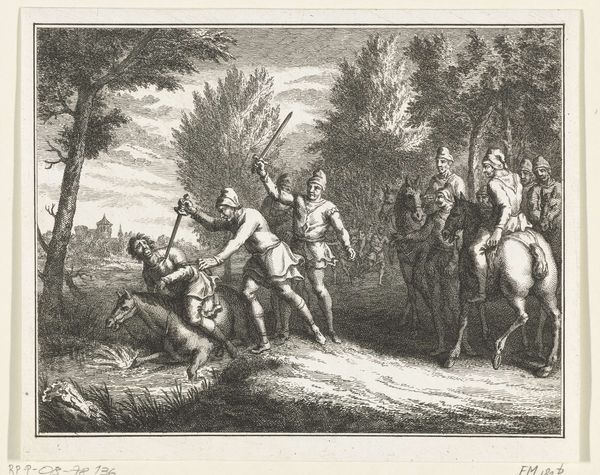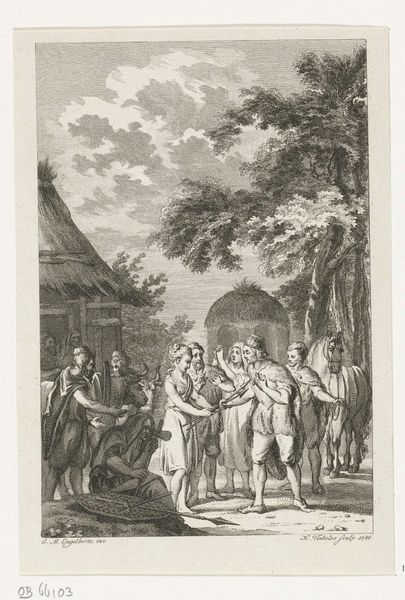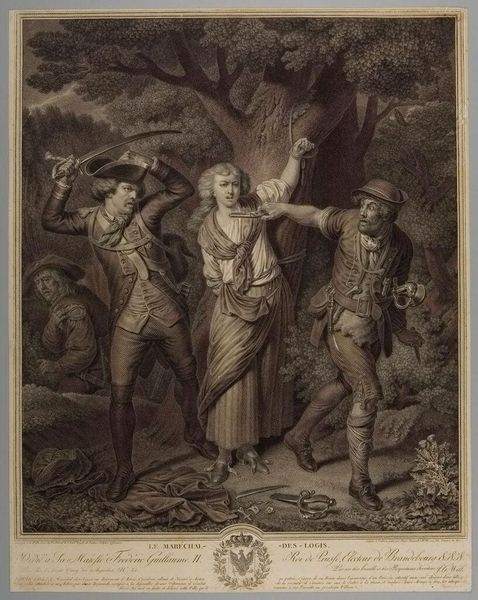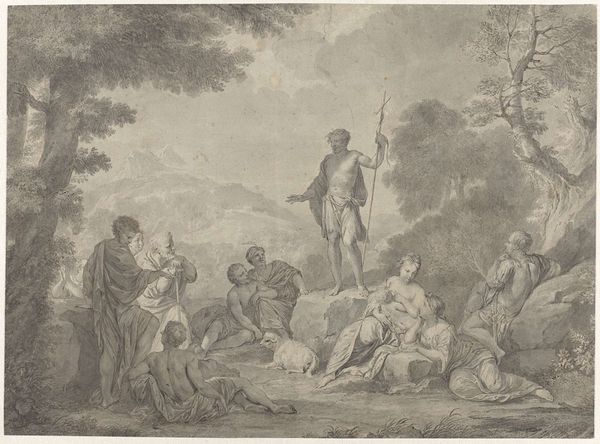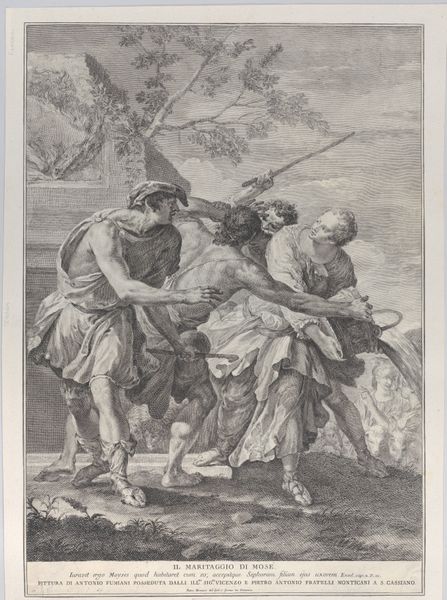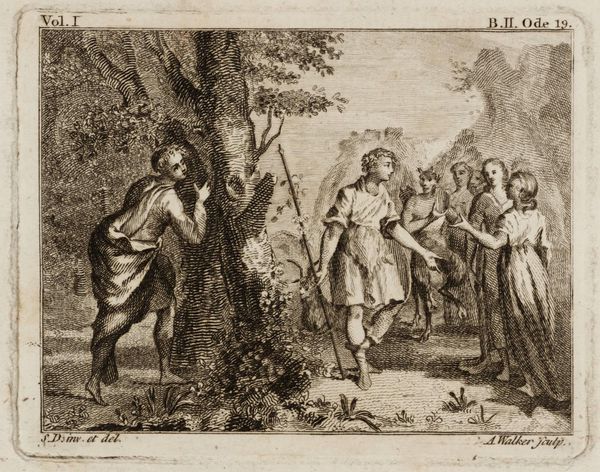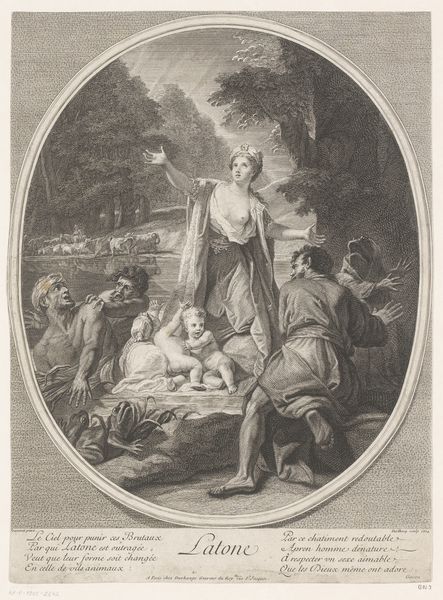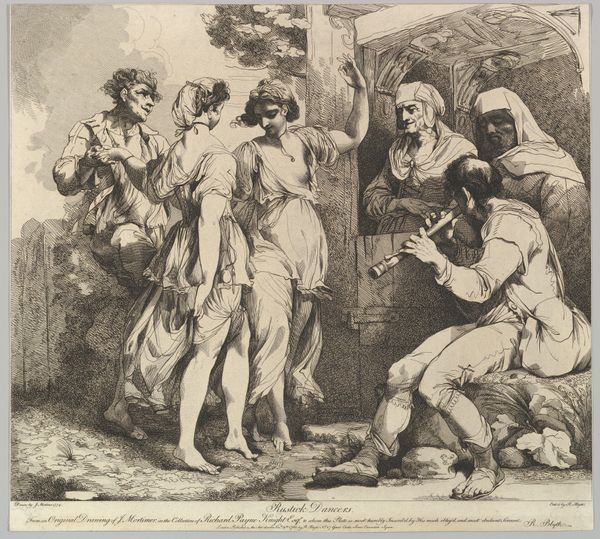
Niels Klim Receives the Homage of the Quamites. 1785 - 1789
0:00
0:00
Dimensions: 42 cm (height) x 35.3 cm (width) (Netto), 49.3 cm (height) x 41.9 cm (width) x 5.2 cm (depth) (Brutto)
Curator: Looking at Nicolai Abildgaard’s painting from sometime between 1785 and 1789, "Niels Klim Receives the Homage of the Quamites," I’m immediately struck by the sense of imposed hierarchy and almost begrudging reverence. Editor: That's interesting. My first thought was about the muted palette. It’s a surprisingly understated scene of supposed grand veneration, and the somewhat ambiguous, undefined background enhances this sensation of mystery and intrigue. Curator: Exactly! Abildgaard, deeply entrenched in Academic art, created this oil painting now housed at the SMK, delving into a scene that portrays cultural interactions and societal power dynamics of the time. He does so, one could argue, to question it. Editor: This feels like a space where social commentary emerges through a fantastical lens. I mean, just observe Niels Klim himself; while being idolized, there's an obvious detached and almost annoyed demeanor. One might even argue this depicts how colonialism and encounters between distinctly different cultures could be perceived by enlightened Europeans at the time. Curator: Abildgaard was clearly working within the historical currents, as he was trying to create a visual manifestation of imagined encounters during an era when encounters of that sort happened on a much grander, geopolitical scale. The subservient Quamites present offerings, literally and figuratively, raising significant questions about power, exploitation, and the exoticisation of other cultures. This painting serves as an entry point for critiquing societal inequities and colonialist exploitation of power, which has unfortunately outlived the piece by quite a lot. Editor: Absolutely. By using muted, restrained tones and a relatively confined composition, the work urges audiences to contemplate and even deconstruct the period’s common perceptions of exoticism and, more broadly, humanity’s quest for dominance over diverse groups of people. Abildgaard gives his social critique quite plainly, but wrapped inside a pretty-looking historical-style painting. Curator: So, looking at Abildgaard's painting today can be used as a lens into how European cultural elites may have been interpreting narratives of cross-cultural interactions and societal roles over two centuries ago, a truly enriching reflection when understanding societal norms, historical dynamics, and much more! Editor: Indeed, examining Abildgaard’s creative endeavors reveals insights that have value far beyond understanding its initial historic meaning; by confronting uncomfortable legacies from long ago, they allow a chance for critical evaluation today.
Comments
No comments
Be the first to comment and join the conversation on the ultimate creative platform.
